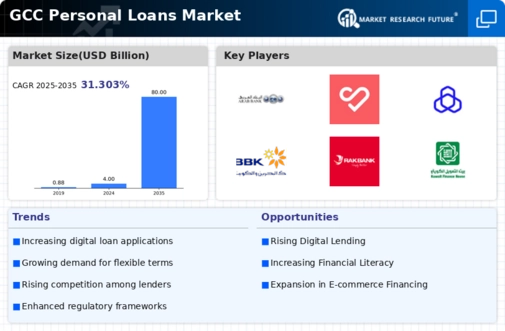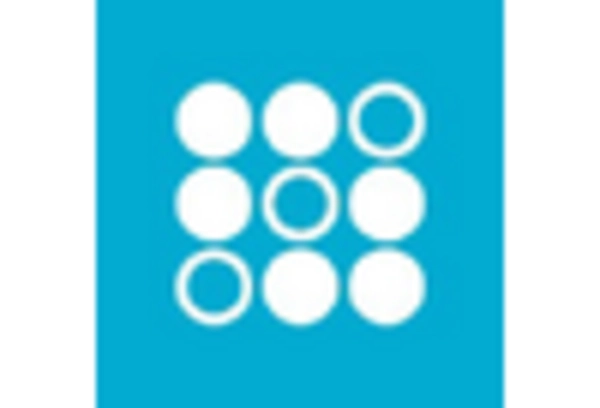Competitive Lending Landscape
The personal loans market is characterized by a highly competitive lending landscape in the GCC. Numerous financial institutions are vying for market share, leading to innovative loan products and competitive interest rates. This competition is beneficial for consumers, as it drives lenders to enhance their offerings and improve customer service. Recent statistics indicate that the average interest rate for personal loans has decreased by approximately 2% over the past year, making borrowing more accessible. As competition intensifies, the personal loans market is expected to continue evolving, with lenders focusing on customer-centric solutions.
Rising Consumer Demand for Credit
The personal loans market is experiencing a notable increase in consumer demand for credit across the GCC region. This trend is driven by a growing middle class and an increase in disposable income, which has led to a greater willingness to take on debt for personal needs such as education, home improvement, and travel. According to recent data, the demand for personal loans has surged by approximately 15% in the last year alone. This rising consumer appetite is likely to propel the personal loans market forward, as financial institutions adapt their offerings to meet the evolving needs of borrowers.
Technological Advancements in Lending
Technological advancements are reshaping the personal loans market in the GCC. The integration of artificial intelligence and machine learning in credit assessment processes has streamlined loan approvals, making them faster and more efficient. Digital platforms are increasingly being utilized, allowing consumers to apply for loans online with minimal paperwork. This shift towards digitalization has resulted in a 20% increase in loan applications processed through online channels. As technology continues to evolve, it is expected that the personal loans market will further benefit from enhanced customer experiences and operational efficiencies.
Regulatory Support for Lending Practices
Regulatory support is playing a crucial role in shaping the personal loans market in the GCC. Governments are implementing policies that promote responsible lending practices, ensuring that consumers are protected while also encouraging financial institutions to lend more. Recent regulatory changes have streamlined the loan approval process, making it easier for consumers to access personal loans. This supportive regulatory environment is likely to foster growth in the personal loans market, as it balances consumer protection with the need for financial institutions to remain profitable.
Increased Financial Literacy Among Consumers
There is a growing trend of increased financial literacy among consumers in the GCC, which is positively impacting the personal loans market. As individuals become more informed about financial products and their implications, they are more likely to seek out personal loans for various purposes. Educational initiatives and awareness campaigns have contributed to this trend, leading to a more discerning borrower base. This shift is likely to result in a more competitive landscape, as lenders strive to offer attractive terms and conditions to appeal to educated consumers who are aware of their options.

















Leave a Comment